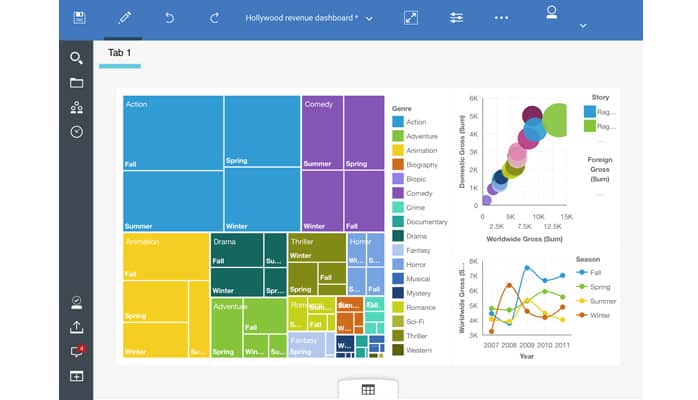When selecting a Business Intelligence (BI) tool, there are a lot of variables at play. It is an extremely noisy ecosystem with many competitors telling you why their tool is the best. To the buyers out there, I empathize with you.
Some of the requirements you may base your BI tool selection on are:
- Ability to deliver on specific use-cases (paginated reporting, bursted reporting, types of visualizations, advanced analytics capabilities)
- Integration with the organization’s wider technology stack
- Ease of use and user adoption
- And of course… Price

A scenario we often come across with our clients leveraging Planning Analytics (PA) as the Extended Planning & Analysis (xP&A) platform is a predetermined decision around their BI tool. It’s no secret that there is widespread adoption of tools like PowerBI and Tableau, to name a couple. While PA can integrate with any BI tool, there are major advantages to using Cognos Analytics (CA) in conjunction with PA. CA is a heavy weight competitor in the BI space as a standalone product, however, combining it with PA creates a great partnership.
The advantages of using Planning Analytics and Cognos Analytics together include:
Security
After setting up PA, you’ll have defined security and permissions for different users and the data they can access. Using CA to disseminate information will apply the same security settings applied to PA. Using a different BI tool increases the maintenance for security by needing to manage both in PA and the BI tool.

Development
All calculations, ratios and KPIs and consolidated hierarchies built in PA flow through CA as well. To leverage a different BI tool means duplication of effort, as all calculations need to be recreated, report by report, for your BI tool. As an example, if you were looking to provide each branch location with a monthly performance report, the logic could be built centrally in PA and extended out through CA with each branch seeing their data. To take the data out of PA and extend the information through a different BI tool, would require the redevelopment of calculations for each branch report.

Advanced Analytics
Both PA and CA are within the IBM Data and Analytics portfolio, which has a suite of solutions that range from BI to Artificial Intelligence (AI). While I don’t love what our industry has done around the marketing of AI, the infusion of advanced analytical capabilities into CA and PA is easy to demonstrate and one of the best examples of an Integrated Analytics Suite that I’ve seen. Examples of this are offering users the ability to leverage Natural Language Processing (NLP) to ask the system questions in plain English, as well as tying into IBM’s predictive engine (SPSS) to see algorithmic forecasting.

In summary:
The benefits of leveraging CA as your BI “add-on” to PA are numerous. There’s a whole other discussion on why PA is the Ventana Market Leader in the Business Planning segment… but we’ll save that article for a different coffee break.
Anything I’ve missed?
Thanks for reading!
Martin Stenning, ActionKPI

Written By Martin Stenning
Martin is a Strategic Executive at ActionKPI. He prides himself in helping his clients, leadership, and peers evolve the role of finance as a strategic advisor to the business. He believes in the team at ActionKPI and the vision to create an elite force of profitability architects to help transform the business world.
